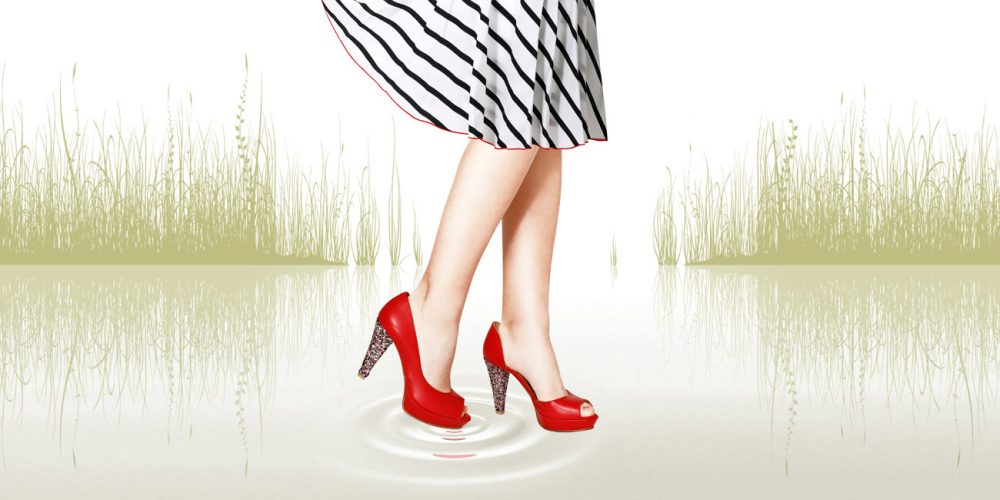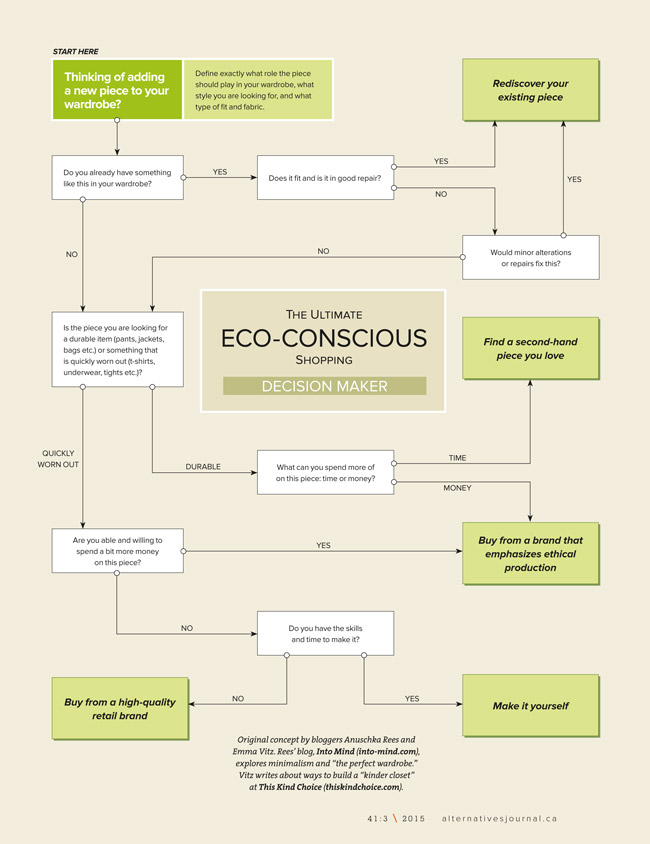Think back to the old folk tale “The Little Red Hen.” In the tale, the red hen’s friends sit idly while she grows the wheat to get the grain to make the flour that eventually makes the bread – that, of course, all the animals want to eat. The moral of the story is contribution and collaboration, but the tale has further meaning to us today. We place high value on convenience and accessibility, both in our food and in our clothes. A new wool sweater looks good on the sale rack, but would we still want it if we had to spin the wool and knit it ourselves?
Think back to the old folk tale “The Little Red Hen.” In the tale, the red hen’s friends sit idly while she grows the wheat to get the grain to make the flour that eventually makes the bread – that, of course, all the animals want to eat. The moral of the story is contribution and collaboration, but the tale has further meaning to us today. We place high value on convenience and accessibility, both in our food and in our clothes. A new wool sweater looks good on the sale rack, but would we still want it if we had to spin the wool and knit it ourselves?
Thanks in part to a boom in production after the Second World War – and automatic washing machines – fashion has become less expensive and more plentiful, while laundering time and effort have plummeted. But the increased convenience of purchasing and cleaning our clothes has fuelled our consumption habits and contributed to environmental and social harms worldwide. Before you run off to a naturist group, consider the following ways to reduce your fashion footprint.
Inventory your closet
Count all the clothes in your own closet. The results might scare you – but keep going. Include the shoes, belts, undergarments and other accessories. Write it all down: 20 pairs of socks, five belts, three pairs of jeans and so on. If you haven’t worn any of these items in the past year, they’ll need to go. We’re looking at you, Professor Emeriti. How many tweed jackets are stashed in your closet? Enough to make a hipster say “deck”?
Now make some goals. How much of this inventory can you eliminate? What is the minimum number of each item you can live with? (No one needs more than three fun-run shirts at any given time.) You might also note where your clothes were manufactured and if any items carry eco- or fair-trade labels or other messaging.
Apply the 6Rs of fashion
Eco-stain be gone! Counting all the clothes in your closet may be humbling, but the 6Rs will help rub out that garment-hoarding guilt.
1. Repurpose Turn old socks into puppets or toys for your pet iguana. Shred that worn-out “I climbed the CN Tower for WWF” shirt into cleaning cloths.
2. Restyle Remember the wool sweater you accidentally felted by putting it in the dryer? Cut off the sleeves and you’ll have stylish leg warmers – or make DIY Sweater Mittens!
3. Reclaim Pass on your treasures by organizing a clothing swap with friends or neighbours. Buy and sell clothes at a consignment or thrift shop.
4. Repair Dust off your grandmother’s darning egg and fix those holey socks tucked in the back of your drawer. Online DIY videos can walk you through a range of clothing repairs.
5. Replace Don’t just add a new piece of clothing to your closet. Choose a languishing item already there, replace it with your new find – then use the first four Rs to send old clothes on a new journey.
6. Rent Rather than buy a new outfit for a special occasion, consider renting. A number of online stores offer this service, including Toronto-based companies Rent Frock Repeat and Your Favourite Dresses.
Limit your laundering
With many so-called sustainable fashion initiatives out there, knowing where to shop can be confusing. Some companies have installed solar panels but fail to pay their workers fair wages. Others promote sustainable fabrics but also create 52 microseasons of clothing a year to encourage consumption. Still other companies make public commitments to reduce hazardous chemicals in their supply chain but do not follow through on promises. Who can you trust?
Recent life cycle analyses show that the biggest environmental impact from clothes stems from the laundering process – especially drying. Levis Strauss & Co., for example, found that 60 percent of the climate impact of a pair of 501 jeans occurs in the hands of the consumer, and 80 percent of that from tumble drying. Fashion sustainability expert Kate Fletcher reports that, on average, 82 percent of energy use and half of air emissions from a piece of clothing come from laundering. So when you next head for the laundry bin, think carefully: Do I really need to put that shirt in the wash? Can I spot clean it or simply air it out instead?
RELATED: A Better Kind of Green Washing
Cut through the greenwashing
The Ecolabel Index provides some guidance, but also lists 109 different ecolabels for the textile industry alone (buy our Fashion issue to see our top recommended Ecolabels). The Greenpeace campaign Detox Catwalk, which aims to eliminate the use of hazardous chemicals in clothing manufacturing, also rates companies as Leaders, Greenwashers or Laggards in terms of transparency and follow-through on detox commitments. And in 2013, Greenpeace International tested 82 children’s textile products purchased in 25 countries. Their findings were published in a report called “A Little Story About the Monsters In Your Closet,” which includes the chemicals they discovered and what brands they were detected in.
We’ve expanded on tips from Huffington Post blogger Ava Anderson to suggest six key ways to beat greenwashing:
1. Don’t be persuaded by fancy clothing labels or alluring advertising. Look for specifics about sustainability and labour practices, rather than broad claims.
RELATED: See how Patagonia and Icebreaker do this in Big Brands Try Sustainability on for Size
2. Learn which textiles have a lower environmental impact – organic cotton, recycled polyester, linen, bamboo and wool, for instance – and which should be avoided.
3. Support your local indie clothing stores. It is much easier to ask them questions about the origin of clothes because they are generally more involved in the supply chain. Building a relationship with a specific store also builds trust.
4. Avoid getting drawn into celebrity endorsements.
5. Start a movement – wear your clothes inside out to increase awareness of clothing labels.
6. Most importantly, ask questions at the point of purchase – the more questions asked, the more things will change. Demand transparency when buying new clothes (and we don’t mean mesh singlets!).
Create a YOUniform
Rather than follow fashion trends, develop your personal style. In the words of Coco Chanel, “Fashion fades – style remains.” Chances are Coco would be unimpressed by Facebook founder Mark Zuckerberg’s choice to wear only hoodies, t-shirts and jeans. Nonetheless, Zuckerberg – like Steve Jobs with his black mock turtlenecks, jeans and running shoes – has created a “YOUniform.”
While a YOUniform won’t inherently lower your clothing footprint, it does lower the impulse to renew your wardrobe each season to match the latest trends. The YOUniform may also eliminate clutter from your closet and from your daily regime. Barack Obama wears only two colours of suits because he wants to pare down decisions, according to an interview in Vanity Fair: “I don’t want to make decisions about what I’m eating or wearing. Because I have too many other decisions to make.”
Last but not least, a YOUniform allows you to create and display your own personal style, even define your personal brand. Johnny Cash was the man in black. What will your YOUniform be?
Use The Ultimate Eco-Conscious Shopping Decision Maker to put all this advice into action:
Jennifer Lynes is associate professor and director of the Environment and Business program at the University of Waterloo. She is also the chair of REEP Green Solutions. Her research focuses on the intersection of marketing and sustainability.














